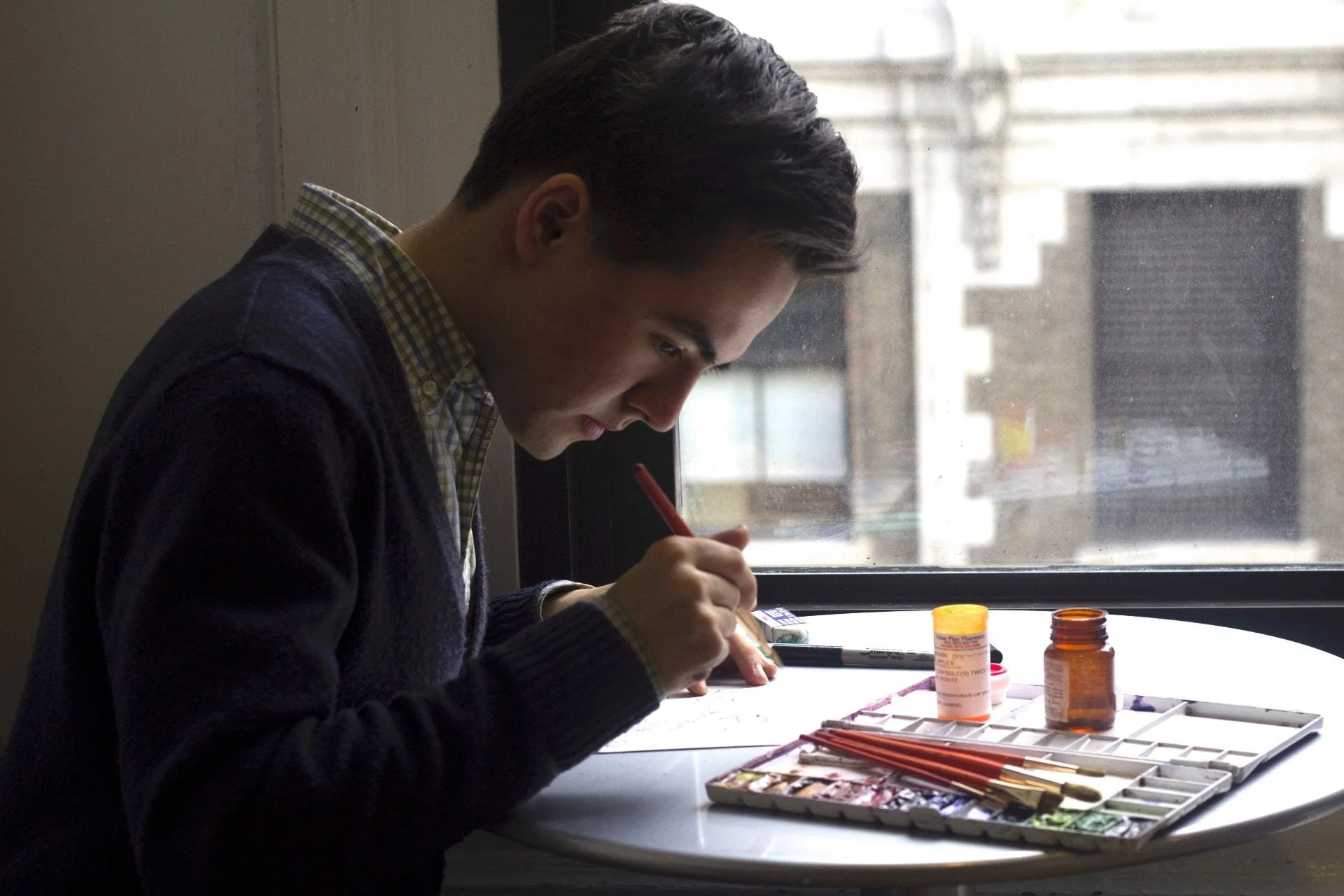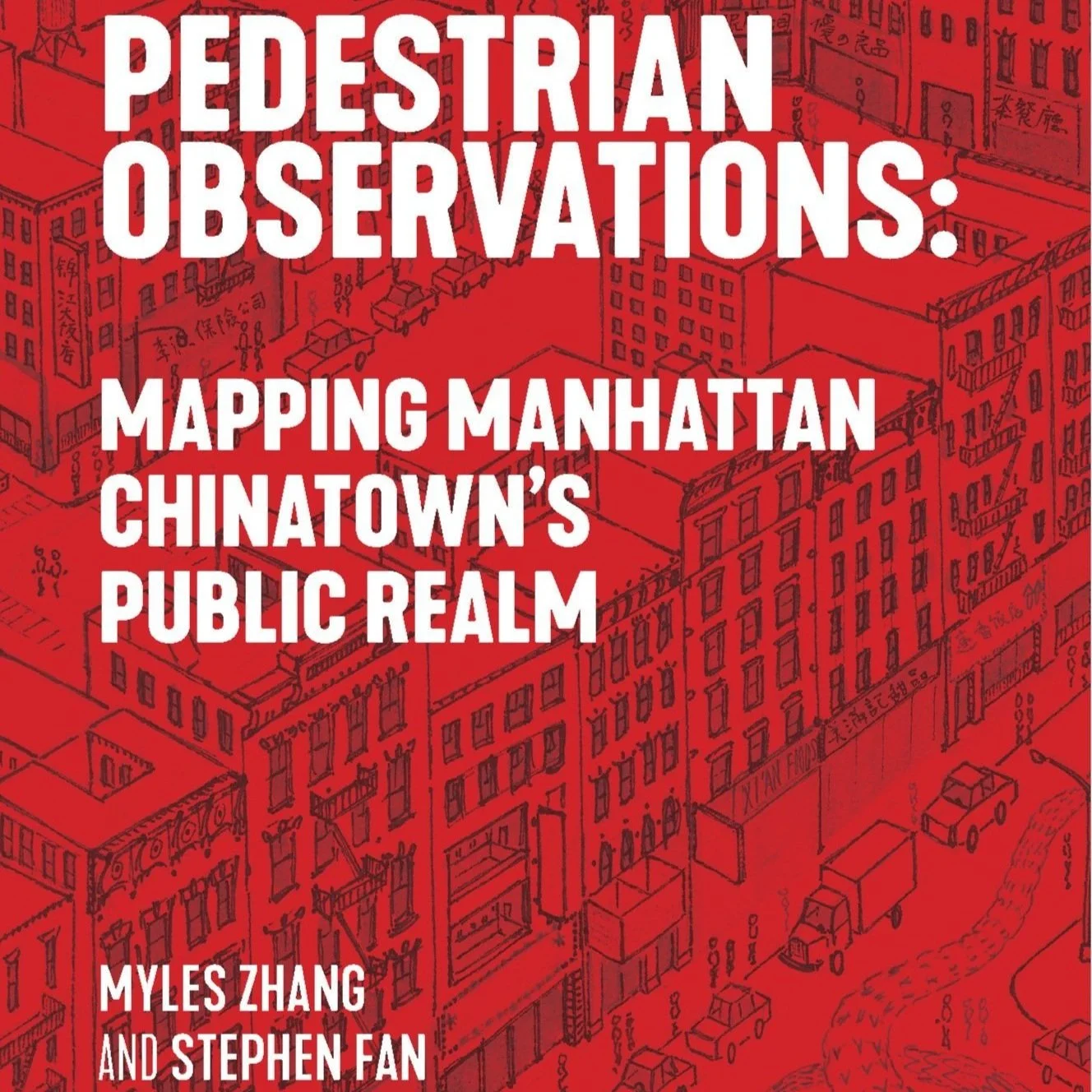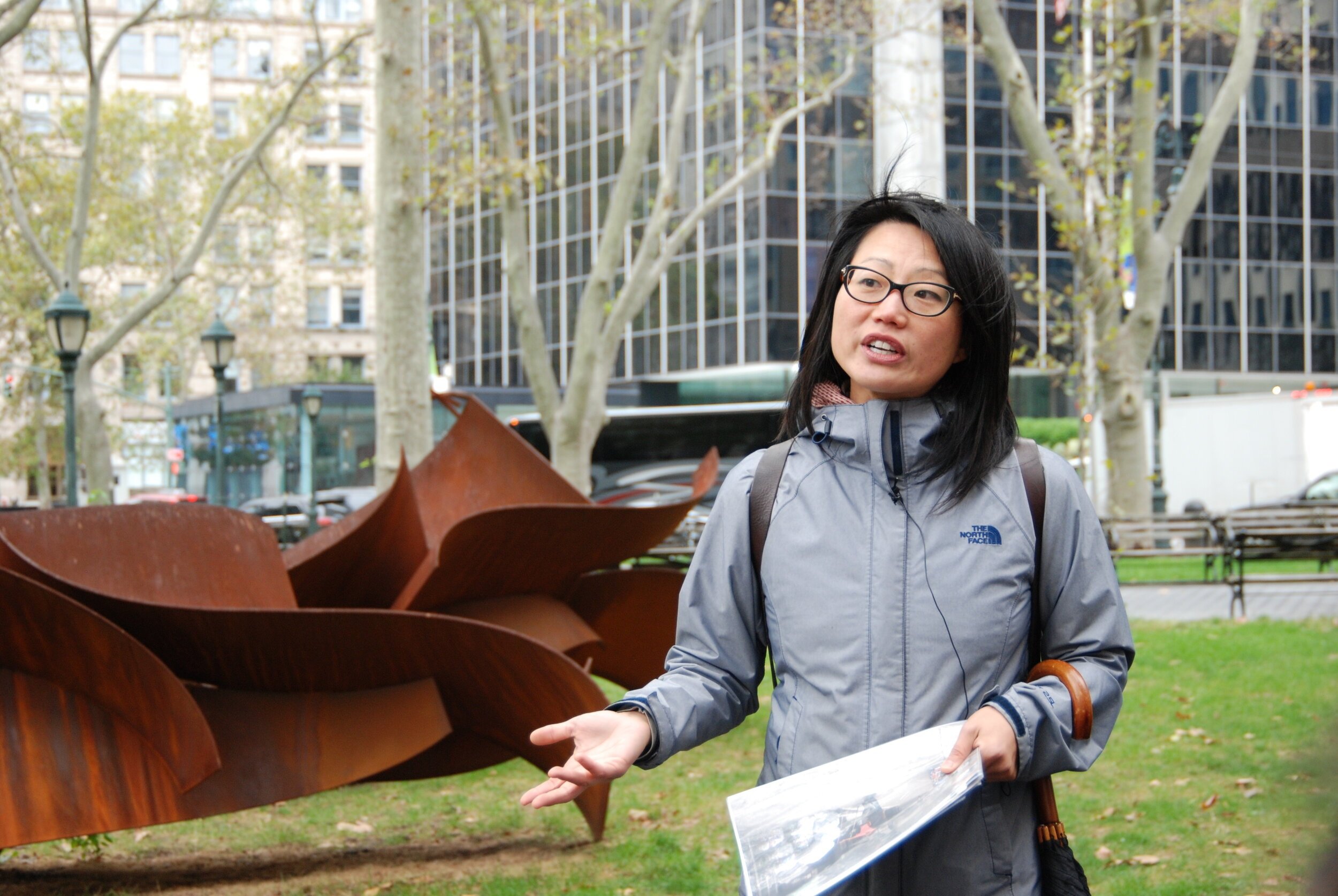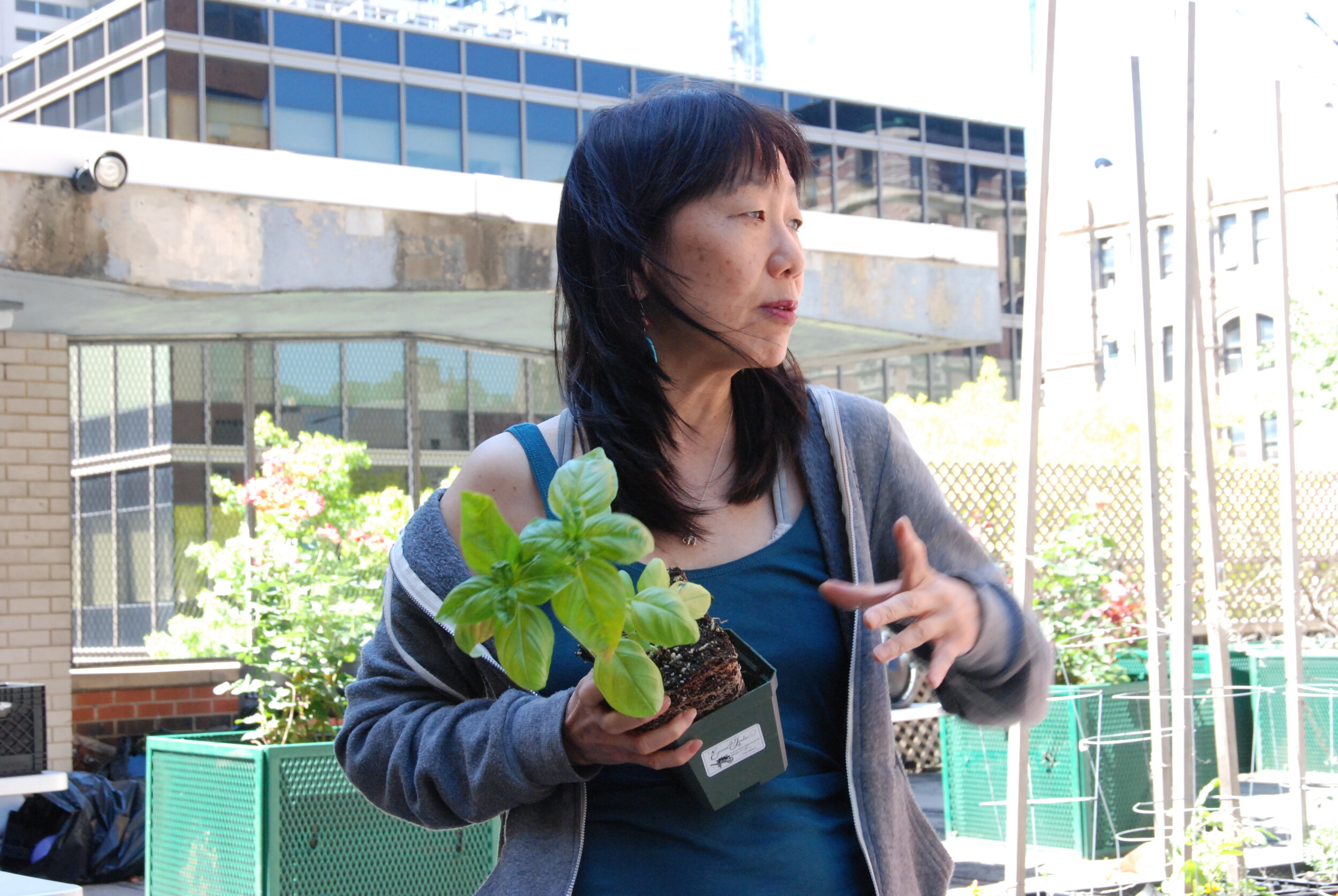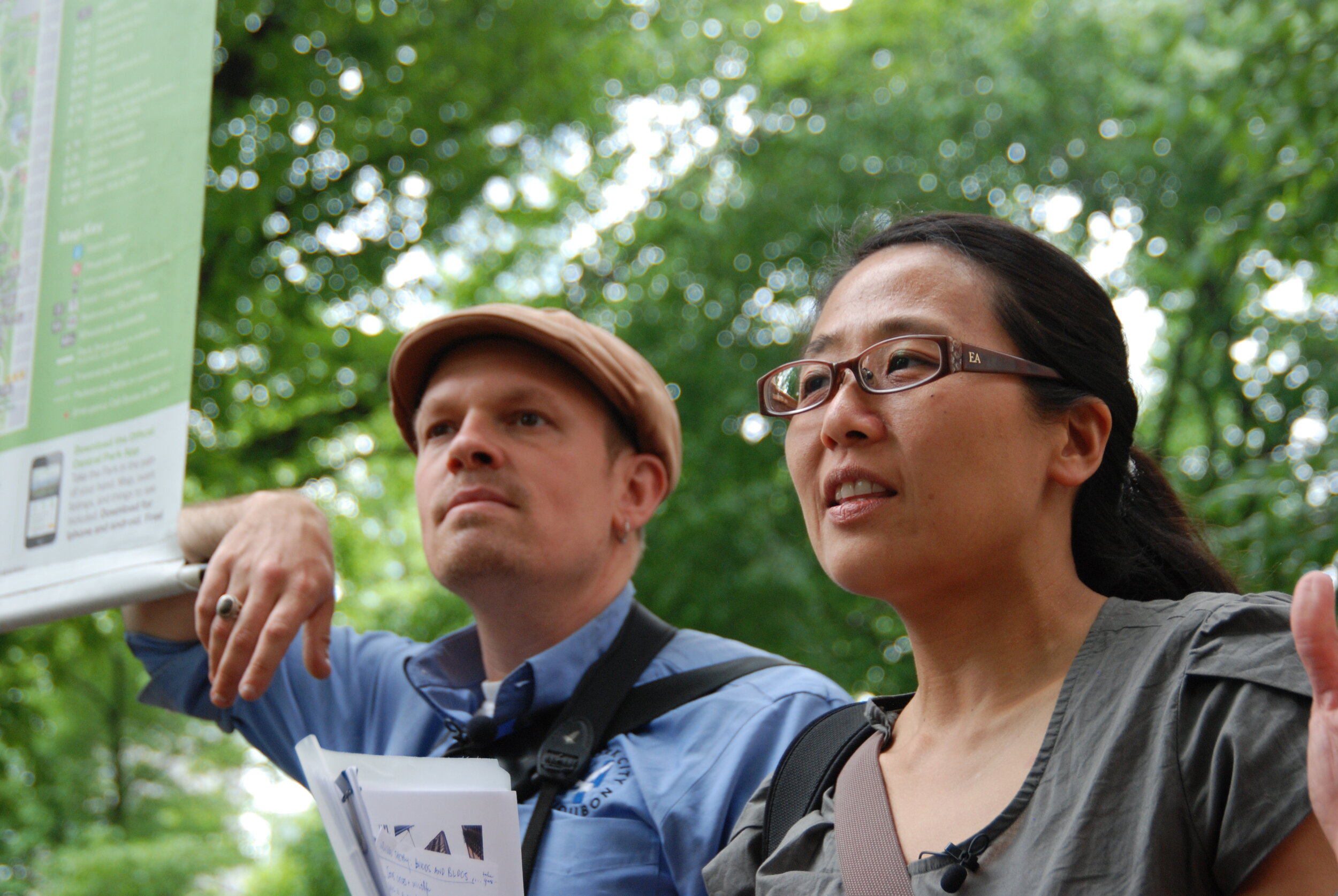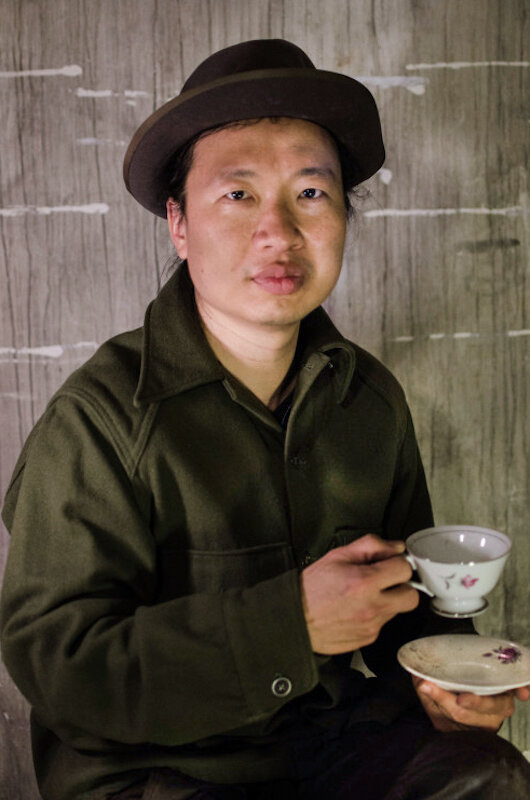Myles Zhang
Myles Zhang (张之远) is one of the artists who have participated in City as Living Laboratory’s Chinatown Project to engage residents in the sustainability issues that affect them every day. His drawings, watercolors, essays, and research examines and document urban change. Myles believes the histories and futures of urban spaces, like Chinatown, are contested between immigrant lives versus municipal agencies and regulations, market forces, and gentrification. His earliest experiences in Chinatown began as he made monthly visits, which persisted for 20 years, to the barbershop on Pell Street (now moved,) the Hong Kong cake sidewalk stand on Mosco Street (now closed,) 88 Palace (now closed,) and to Vanessa’s Dumpling House (surviving).
Myles and architect, Stephen Fan, most recent project Pedestrian Observations: Mapping Manhattan Chinatown’s Public Realm, is currently on view in Columbus Park. The illustration captures elements of Manhattan Chinatown’s public realm: its sidewalks, curbs, and streets, and its parks, storefronts, and institutions. These many vignettes highlight the complex and fluid relationships between public and private spaces, overlaid with public and private uses.
In 2021 Myles and Stephan held a drop-in event where individuals shared observations about street life in Chinatown on an 8’ long map-inspired outline illustration. This project focused on how space is used, including the boundaries between public and private space, and space that is occupied or contested. This project was inspired by a Zoom series throughout the pandemic, led by Stephen Fan, where a small group of community members gathered to learn about the history of mapping generally, and then in New York City as Manhattan’s Chinatown specifically.
Myles is a current Ph.D. candidate at the University of Michigan, studying 20th-century American urban history. His dissertation examines the “redlining” process, in which state actors and market influences target specific urban neighborhoods and communities and subject them to displacement. Institutional powers created and profited from the “production of decline” in Detroit and Detroit-like regions. Using the tools of history and archives, this work challenges the populator misconception that particular urban neighborhoods are marginalized as a result of the work ethic of those who occupy and live there.
CALL/CHINATOWN: Pedestrian Observations: Mapping Manhattan Chinatown’s Public Realm
Along Mott Street, boxes of fruits and vegetables from the US, Latin America, and China flow from the private open storefronts and onto the public sidewalks and curbs. Forklifts navigate around crates and delivery trucks as vendors, residents, tourists, and shoppers — from regional Asian restaurant owners to West African immigrants — animate the narrow walkways. After business hours, private produce stands become public places to sit, chat, people-watch, or nap as a sidewalk masseuse sets up two chairs on the public sidewalk to provide his private services.
Away from the commercial corridors on the Pace High School track, teenagers sit in circles sipping on bubble tea while senior citizens slap playing cards on makeshift tables along the perimeter. Inside the Chinese Consolidated Benevolent Association, teachers begin their Chinese language classes while protesters in Columbus Park call for ending violence against Asian Americans.
These vignettes capture elements of Manhattan Chinatown’s public realm: its sidewalks, curbs, and streets, and its parks, storefronts, and institutions. Illustrated in the following map, many vignettes highlight the complex and fluid relationships between public and private spaces, overlaid with public and private uses. By highlighting these relationships, we hope to stimulate conversations about how to foster a healthy symbiosis between these spaces and uses: how the public realm can be better used, designed, managed, and reimagined to shape a more resilient and inclusive public realm.
This project is part of CALL // CHINATOWN, a larger initiative of artist and scientist led collaborations that delve into the ecological, and cultural landscape of Chinatown.
CALL/CHINATOWN: Architecture of Endurance
Welcome to Chinatown! With a population of ~150,000, this neighborhood is the largest ethnic Chinese community outside of Asia, and the neighborhood has gone through many transformations in it’s journey from a wetland to what it is today. Join historian and illustrator Myles Zhang on a mile-long walk through space and time.
You can explore this walk by clicking on the google map on this page. You can navigate it on this site, or you can click the box icon on the top right corner of the map to expand it; if you are using your phone and you have the google maps app, it will open up right there in your app.

